Elements of Art – An Analysis of the Most Important Art Elements
As an art student, you may have come across the seven elements of art and the principles of art and design. Elements in art refer to stylistic devices that an artist employs to communicate their message visually to the viewer. This article will provide you with an introduction to the seven art elements and their uses as seen in various artworks.
What Are the Elements of Art?
The elements of art can be understood as the basic components of an artwork that an artist applies to relay their intention, theme, or subject matter. Art elements include the use of key visual indicators that are useful to read an artwork and can greatly inform your analysis of the artist and the execution process behind an artwork. The seven elements of art include:
These art elements provide technical guidelines for examining a work of art. In conjunction with the basic elements of art, you may also be familiar with the basic principles of art. It is important to distinguish between the two and it may be confusing at first but once you read on, you will most likely have an improved understanding of the differences and details.
Below, you will find a brief overview of all the elements of art.
Line
One of the most important building blocks of art, line, is an element that has existed since the prehistoric ages and is characterized as a point that moves in space. You have probably also heard the phrase “the shortest distance between any two points is a straight line.”
The line is not only flexible in that it can appear curved or straight but it is also unique in that it does not require an outline.
The line is direct and can be applied in many ways to achieve the foundational aspects of your drawing. Lines also serve the purpose of adding shape, structure, and perspective to your artwork. Artists use lines in a variety of ways. These include broken lines, continuous lines, vertical lines, and horizontal lines, all of which have an impact on the final view of the artwork.
Rearing Stallion (c. 1928) by Alexander Calder
| Artist Name | Alexander Calder (1898 – 1976) |
| Date | c. 1928 |
| Medium | Wire and painted wood |
| Dimension (cm) | 57.8 x 34.3 x 24.8 |
| Where It Is Housed | National Gallery of Art |
Above is an example of the use of line as seen in sculpture by the famous American artist, Alexander Calder. Calder described his use of wire to create lines as his way of speaking. Line is therefore seen as an element through which you can create three-dimensional artworks.
A line may appear to be clinical and a primary mathematical subject in geometry but the power of the line in art even expands into psychology.
The use of the line is so flexible that it can be used to evoke emotion, even in its simplest form, such that the viewer experiences feelings of seriousness through simplicity. The line is significant across typography, design, and many of the most famous early artworks by artists such as Leonardo da Vinci and Pablo Picasso.
Shape
Shape is considered an element that transcends beyond the art sphere and can be understood visually more than it can be defined. A seemingly abstract term, shape is defined by the Massachusetts College of Art and Design as an element that is flat, limited by height and width, and two-dimensional.
Spring Turning (1936) by Grant Wood
| Artist Name | Grant Wood (1891 – 1942) |
| Date | 1936 |
| Medium | Oil on masonite |
| Dimension (cm) | 46.4 x 101.9 |
| Where It Is Housed | Figge Art Museum |
As seen above, shape can be used to compliment the subject of a painting. In Spring Turning (1936), Grant Wood applied shape to the landscape, which helps shift the depiction of a traditional landscape as being distant and something with a body that is out of reach.
Wood elevates the horizontal line along with the width of the landscape and thus creates a feeling of expansion, compression, and life across the four fields.

Shape can also be understood as an element applied to achieve a particular depiction of a subject or object, whether abstract or through the constructs of Realism. Shape is what gives the artwork’s subject or object “character” and adds to the visual “weight” of the artwork.
Color
Color as an art element is divided into three segments, namely hue, intensity, and value. Hue is defined as the primary property of color and according to the CIECAM02 model, it is the degree to which a stimulus can be described as different from or similar to stimuli such as yellow, blue, red, orange, green, and violet.
Color intensity refers to the brightness or purity of a color.
Visually, you would recognize high-intensity colors by their boldness and brightness, whereas low-intensity colors are seen as dull and faint. Color value speaks to the lightness or darkness of the color’s hue and is varied depending on the addition of white or black to it.
The Scrovegni Chapel Fresco (c. 1303 – 1305) by Giotto
| Artist Name | Giotto di Bondone (c. 1267 – 1337) |
| Date | c. 1303 – 1305 |
| Medium | Egg tempera |
| Dimension (m) | 20.88 x 8.41 x 12.65 (nave) |
| Where It Is Housed | Padua, Veneto, Italy |
Giotto di Bondone is an excellent example of an artist who utilized color to achieve his artistic intention on the Scrovegni Chapel in Padua. Completed around 1305, Giotto places much importance on the color blue instead of the traditional gold that was often associated with heavenly figures. Giotto’s use of blue on the ceiling of The Last Judgment fresco was to emphasize heaven and the idea of an “eternal existence”.
Blue alludes to expansion and unity, which stood out at the time considering the color gold was popular among religious artworks.

Form
This art element is known as the heart of the subject or object itself, as represented in an artwork. Form is the rendition of a three-dimensional form within two dimensions and includes height, width, and depth with an enclosed volume.
Form often appears hand-in-hand with sculptural works. Below is an example of form used abstractly in conjunction with space and light by global sensation, James Turrell.
Amrta (2011) by James Turrell
| Artist Name | James Turrell (1943 – Present) |
| Date | 2011 |
| Medium | Light and space installation |
| Where It Is Featured | Pace Gallery, Pasadena Art Museum, Henry Art Gallery, Fine Arts Museums of San Francisco, de Young Museum, P.S. 1 |
Examples of form include a pyramid, cube, and sphere, as well as objects with seemingly zero form known as abstract forms. These are free-flowing and do not need a known shape to be defined. Forms can also be divided into two categories; geometric and organic forms.
Texture
Texture, as you might casually refer to it, is defined by the way something looks and is built to give off a feeling that it can be “felt” or touched by the senses. Texture can be identified through the artist’s use of medium and technique in an application.
This means that you can witness texture through brush strokes in a painting, whether fine, smooth, or heavy in the application of paint, such that it “brings the subject to life” and the viewer feels what is portrayed.
Ancient Writing (1936) by Anni Albers
| Artist Name | Anni Albers (1899 – 1994) |
| Date | 1936 |
| Medium | Woven fabric |
| Dimensions (cm) | 150.5 x 111.8 |
| Where It Is Housed | Smithsonian American Art Museum |
There are various means of creating texture in an artwork and you may recognize this in works such as paintings, sculptures, and any three-dimensional artworks. Above is an example of texture in art by Anni Albers. Albers was an expert at creating these beautiful abstract textile pieces since the early 1920s.
Her use of texture to transcend weaving and textiles beyond the craft space is exemplary and she became a pioneer of textural artwork beyond the factory-produced craft narrative.
Space
Space is an interesting art element and is used strategically for multiple reasons. The main function of space is to draw into focus the subject of the artwork and utilize space in a way that highlights the subject or specific area of an artwork. Space consists of presence and absence, of negative and positive space. More importantly, it is the relation of each of these versions of space that can affect the artwork and the subject.
The empty space around a key object is called the negative space, whereas the “filled-in” space occupied by the main object is known as the positive space. The relationship between the two can create different interpretations of the object, depending on how it is used.
The more negative space you use, the more isolated and smaller your subject will seem. The more positive space you use, the more bold, busy, and intimate your object will appear. Finding a balance between the two, depending on your intention is key. Space can also be applied to create a visual illusion. Also known as a representation of three-dimensional space, an artwork can come to life in a dimensional sense, in conjunction with the perspectival drawing, to depict a three-dimensional image. Further emphasized by shading and other perspective techniques, space is a great art element to play with.
Paris Street; Rainy Day (1877) by Gustave Caillebotte
| Artist Name | Gustave Caillebotte (1848 – 1894) |
| Date | 1877 |
| Medium | Oil on canvas |
| Dimensions (cm) | 212.2 x 276.2 |
| Where It Is Housed | Art Institute Chicago |
Space can be used to create a multipoint perspective. This means that an artwork contains more than two focal or vanishing points and requires much technical skill. An example of space manipulated in this way is Paris Street; Rainy Day (1877) by French artist Gustave Caillebotte who illustrates a busy intersection close to the Saint-Lazare train station.
Caillebotte includes life-sized figures dressed in the fashion of the time as a nod to modernity. This is also emphasized in his complex use of multipoint perspective to acknowledge the multiple developments of this area, which was also his hometown.
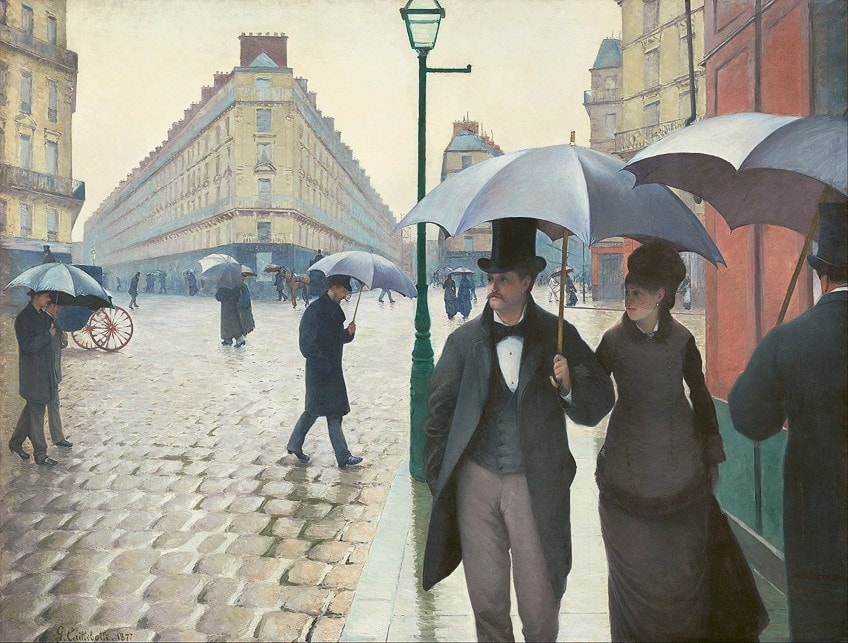
Value
Value as an art element refers to the darkness or lightness of colors and tones. As mentioned in color value, the extreme values are black and white with the middle ground being gray. This value spectrum has the power to determine the mood of the painting and is an important point to consider when planning an artwork.
This can also be understood as the luminosity of an artwork, which has the power to influence how you view the objects and texture in your artwork.
Whistler’s Mother (1871) by James Abbott McNeill Whistler
| Artist Name | James Abbott McNeill Whistler (1834 – 1903) |
| Date | 1871 |
| Medium | Oil on canvas |
| Dimensions (cm) | 144,3 x 162,4 |
| Where It Is Housed | Musée d’Orsay, Paris |
This renowned painting by American artist James Abbott McNeill Whistler is a classic example of the use of low-key value. Whistler’s stark contrast is created between his mother’s black dress and the light gray walls in the background.
While one can tell that other elements in the background are also black, Whistler strategically lightens the black with gray to distinguish the subject from objects in the background.

Aside from the relationship of value with color, value in art can also imply the significance of the artwork in terms of its cultural or aesthetic value. Value is also defined monetarily so it is also important to note that value carries weight.
Summary of Art Elements
As you may notice, the art elements are crucial to understanding art itself and are incredibly important tools for anyone interacting with art. To quickly revise, below you will find a summary of the different elements of art and their definitions.
| Art Element | Definition |
| Line | Line can be defined as the path created between two points. Line can appear visually as straight, curved, jagged, and other variations for different purposes. |
| Shape | Shape is defined by its confines as limited to height and width. While often used to depict two-dimensional objects, shape can be manipulated to create the illusion of a three-dimensional figure. |
| Color | Color as an art element is defined by three attributes: hue, value, and intensity. |
| Form | Form is characterized by its inclusion of height, width, depth, an enclosed volume, and two-dimensional aspects to render a three-dimensional object or subject. Form can be fluid, geometric, and manipulated by other art elements. |
| Texture | Texture is defined as the combination of materials or techniques in art that create a particular “look” and “feel” of something. Texture as an art element refers to the visual textual aesthetic. |
| Space | Space as an art element is understood in terms of its attributes: negative and positive space. It is also the relationship between the main subject of an artwork and the rest of the objects in the artwork. |
| Value | Value as an art element is defined as the darkness or lightness of colors in an artwork. Value is also understood in terms of economic, social, political, and artistic contexts. |
What Are the Principles of Art?
The principles of art refer to the guidelines that an artist uses to organize the elements of their artwork. The principles of art can be understood as a tool, while the elements of art can be understood as the visual components that are rearranged and curated using the principles of art.
The principles of art are also known as the basic principles of design. The basic principles of art include rhythm, balance, emphasis, proportion, gradation, harmony, variety, and movement.
As you may observe, the principles of art appear to be a little more complex than the art elements but rest assured, once you reach the end of this article, you will be excited to flex your technical art knowledge. Below, you will find a brief introduction to the different principles of art.
Rhythm
Rhythm refers to the movement witnessed in an artwork. Commonly associated with music, rhythm as a principle of art refers to the visual tempo of the artwork and its subject matter. More accurately, it is created through the combination and repetition of art elements in various ways to establish the visual “beat”, as seen in the print below by Albert Renger-Patzsch.
Originally shot around 1930, the print was produced c. 1956 and illustrates the rhythm of the trees.
Beech Forest in Fall (Büchenwald im Herbst) (c. 1930 – 1956) by Albert Renger-Patzsch
| Artist Name | Albert Renger-Patzsch (1897 – 1966) |
| Date | c. 1930 – 1956 |
| Medium | Gelatin silver print |
| Dimensions (cm) | 28.1 x 38.1 |
| Where It Is Housed | Art Institute Chicago |
Within this photograph by Albert Renger-Patzsch, rhythm is created through the repetition of the thin tree trunks that extend as far as the eye can see. As the scene is quite dark, the multitude of tree trunks in Beech Forest in Fall adds an element of eeriness to the work, along with the rhythm that is there.
Balance
Like most aspects of life, balance is a principle that cannot be overlooked, especially when it comes to reading an artwork or planning one. Balance suggests the use of art elements to establish a sense of equilibrium within an artwork.
This is more than just a sense since the visual arrangement of art elements such as line and space can be used to illustrate symmetry and asymmetry.
Flower Day (1925) by Diego Rivera
| Artist Name | Diego Rivera (1886 – 1957) |
| Date | 1925 |
| Medium | Oil on canvas |
| Dimensions (cm) | 147.32 x 120.65 |
| Where It Is Housed | Los Angeles County Museum of Art |
Symmetrical balance alludes to a visual feeling of stability and can be created through mirror images. Asymmetrical balance is used to establish a sense of movement and disturb the structured nature of symmetry. This is achieved by incorporating organic forms (an art element) with appropriate use of negative and positive space, as well as color to illustrate movement.
The artwork by Diego Rivera is an example of symmetrical balance in art, as Flower Day (1925) depicts a calla lily seller with each subject falling on equal halves of the painting.
Emphasis
Emphasis alludes to importance and focus. You may have played around with the basic editing tools on your smartphone and noticed the effect that contrast (emphasis) has on an image. Contrast can be used to emphasize the difference between objects or parts of an artwork.
This is the principle that is applied to grab the viewer’s attention while highlighting the subject.
Joseph the Carpenter (c. 1642) by Georges de La Tour
| Artist Name | Georges de La Tour (1593 – 1652) |
| Date | c. 1642 |
| Medium | Oil on canvas |
| Dimensions (cm) | 130 x 100 |
| Where It Is Housed | Louvre, Paris |
Emphasis is achieved by boldening certain areas of a painting (making it darker) to create contrast (or the appearance of binaries). As seen in the painting above by French artist Georges de La Tour, Joseph the Carpenter (c. 1642) shows emphasis on the contrast of the light with darkness. This style of painting is known as Tenebrism, which showcases “dramatic illuminism” to emphasize the subject of an artwork.
Aside from color as the tool to create emphasis, other art elements such as texture and shape can be used to highlight differences and create focus.
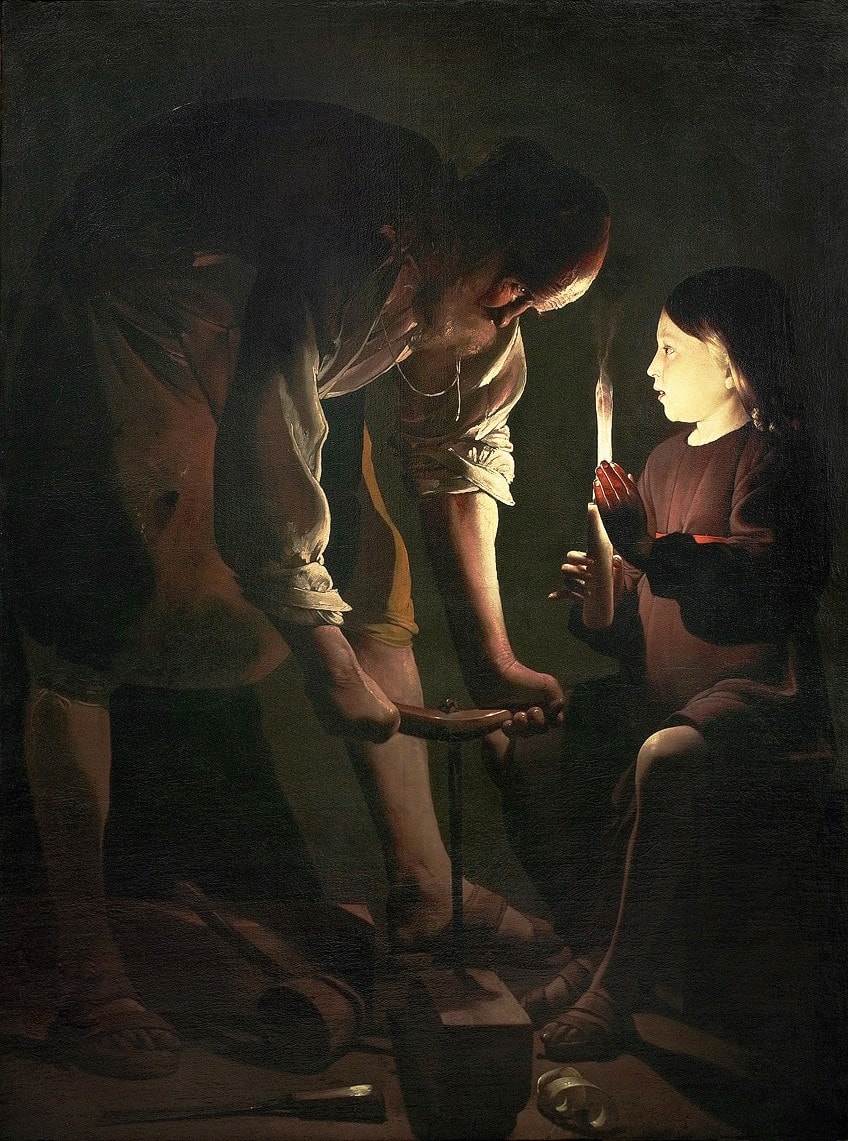
Proportion
Proportion is the relationship of art elements to each other and to the whole of an artwork. You may have heard of concepts such as the golden ratio or golden mean to achieve perfect proportions. Proportion refers to the size of each object or subject about each other such that it appears “realistic”.
Still Life with Fruit on a Stone Ledge (c. 1601 – 1610) by Caravaggio
| Artist Name | Caravaggio (1571 – 1610) |
| Date | c. 1601 – 1610 |
| Medium | Oil on canvas |
| Dimensions (cm) | 87.2 x 135.4 |
| Where It Is Housed | Private collection |
Caravaggio’s Still Life with Fruit on a Stone Ledge (c. 1601 – 1610) is a prime example of good proportion in art. Caravaggio’s still life of fruits presents a traditional approach to proportion, that being, proportion can be used to depict objects or subjects as they appear, such that they do not stray from the unrealistic perception of their original size about their environment.
Since we have progressed well beyond the confines of tradition, proportion can be manipulated to exaggerate or undermine objects or aspects of an artwork, given that this is the intention of the artist.

Gradation
You may be familiar with the term gradient through the lens of color but gradation is more specific as an art principle since it takes a combination of elements to create gradual changes in elements such as color, shape, and hue.
Off the Nore (c. 1840 – 1845) by J. M. W. Turner
| Artist Name | William Turner (1775 – 1851) |
| Date | c. 1840 – 1845 |
| Medium | Oil on paper, laid on canvas |
| Dimensions (cm) | 30.5 x 45.7 |
| Where It Is Housed | Yale Center for British Art |
Off the Nore (c. 1840-1845) by William Turner is one such example of gradation applied to painting. In many of his works, Turner makes use of tonal gradation to create his unique style of “swirling” landscapes. As his work progressed, he was drawn toward abstract subjects and eventually expressed tonal gradation using only light. Outside of the confines of color, gradation can be viewed as an object or shape getting bigger or smaller.
If applied on hue, the gradation will show either a light hue to a dark hue and vice versa. This principle is used to show the transition from one state to another and is an effective way to achieve certain aesthetics.
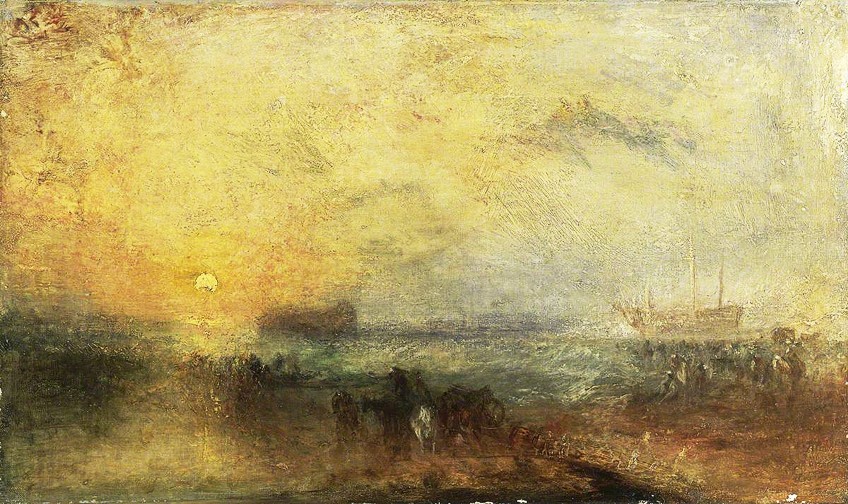
Harmony
Try to not get confused but harmony as an art principle refers to a manner of combining art elements such that you want to emphasize their similarities. This is different from gradation and balance since harmony is associated with the use of gradation in a subtle manner and the repetition of certain art elements to achieve harmony.
This is what creates unity and can be recognized as an artwork that does not have a color hue or proportion out of place. It is harmonious to its greater whole.
The Old Guitarist (1904) by Pablo Picasso
| Artist Name | Pablo Picasso (1881 – 1973) |
| Date | 1904 |
| Medium | Oil on panel |
| Dimensions (cm) | 123 x 83 |
| Where It Is Housed | Art Institute of Chicago |
Harmony can be seen above in Pablo Picasso’s painting, The Old Guitarist (1904), which makes use of hues with similar shades of green and blue across the entire painting. This is done to create a visual harmony and set the mood of the painting.
While harmony can be created across multiple visual aspects of art, harmony in color is the most common.
Variety
Variety as an art principle refers to a combination of multiple art elements, such as color and shape, in addition to objects that showcase variety. This principle is associated with diversity and contrast and is considered an important partner to harmony.
The Gust of Wind (1860) by Jean-Baptiste Camille Corot
| Artist Name | Jean-Baptiste Camille Corot (1796 – 1875) |
| Date | 1860 |
| Medium | Oil on canvas |
| Dimensions (cm) | 48 x 66 |
| Where It Is Housed | Pushkin Museum of Fine Arts |
The Gust of Wind (Un coup de vent) (1860) by French artist Jean-Baptiste Camille Corot is a great example of variety in art as it makes use of color variance through value. Finding the balance between variety and harmony is an important thing to achieve in an artwork.
The reason that finding a balance is so important is that it demonstrates variety.
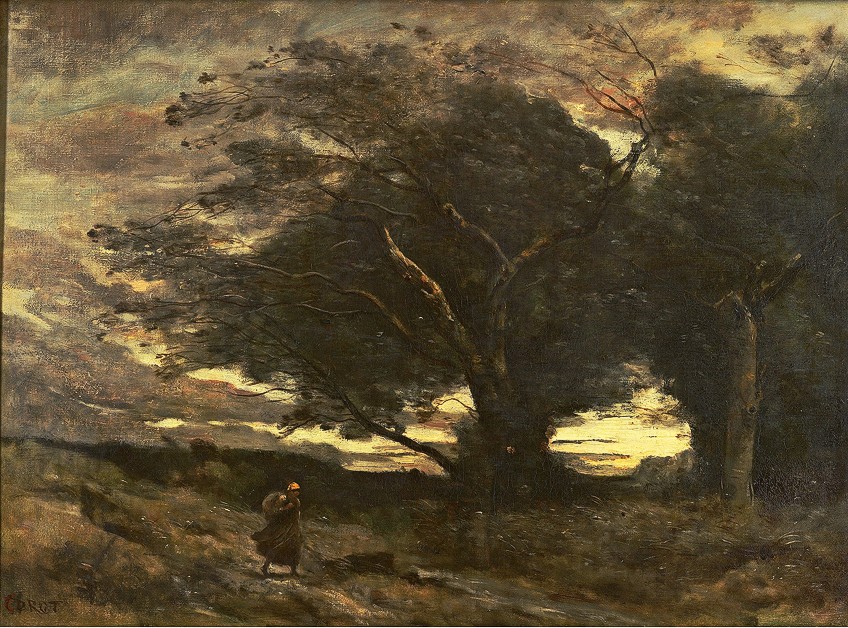
Movement
This art principle, when applied, gives off the feeling and visual effect of action. Movement is a key principle that helps direct the viewer’s gaze through the different elements of the artwork. Movement can be created through the repetition of various gestural marks, lines, contours, perspective techniques, and gradation.
Ju-Jitsu (c. 1913) by David Bomberg
| Artist Name | David Garshen Bomberg (1890 – 1957) |
| Date | c. 1913 |
| Medium | Oil on board |
| Dimensions (cm) | 61.9 x 61.9 |
| Where It Is Housed | Tate |
Ju-Jitsu (c. 1913) is a culmination of movement inspired by Cubism, Futurism, and the athletic, geometric-like movements of ju-jitsu practitioners. The complex visual composition is a grid, which is interrupted by the geometric figures to mimic the dynamic expressions of jujitsu.
This is a simple yet effective method of illustrating movement through line and shape.
Summary of the Principles of Art
The principles of art are essential to unlocking the potential of the elements of art. Below we have provided a brief summary of the principles of art to help you cement your understanding of the principles of art about one another.
| Art Principle | Definition |
| Rhythm | Rhythm is defined as the visual tempo or movement expressed in the artwork. |
| Balance | Balance is defined as the combination of art elements to achieve equilibrium among the objects, color, or subject(s) in the artwork. Balance can be divided into symmetrical and asymmetrical balance. |
| Emphasis | Emphasis is defined as the focus of the artwork achieved through the application of contrast on specific areas of the artwork to highlight the area of focus. |
| Proportion | Proportion is defined as the relationship of art elements to each other and about the rest of the artwork as a whole. |
| Gradation | Gradation can be understood as the combination of art elements to illustrate gradual changes in hue, shape, or pattern. |
| Harmony | Harmony can be defined as the manner of arranging art elements such that the intention is to highlight their similarity. |
| Variety | Variety is defined as a mixture of different art elements with sub-variations in color, tone, shade, shape, line size, proportion, perspective, and other art elements. |
| Movement | Movement is defined as the combination or repetition of art elements such as line, painting style, color, depth, and value to create the visual image of movement within an artwork. Movement is also a guiding tool for the viewer to experience the artwork. |
Why Are the Elements of Art So Important?
Now that we have covered a brief overview of both the elements of art and principles of art, it is only fitting to discuss the importance of art elements. Below, you will find a few reasons why the art elements are so important and how it is applied to your experience of an artwork.
Firstly, the elements of art are foundational aspects of building an artwork and allude to the technical execution behind an artwork.
A lot of thought and planning goes into a well-executed artwork and artists focus on many different combinations of art elements (in connection with the principles of art) to achieve their signature styles. It can therefore be said that art elements are crucial to developing your own art style, especially if you want to stand out from the crowd.
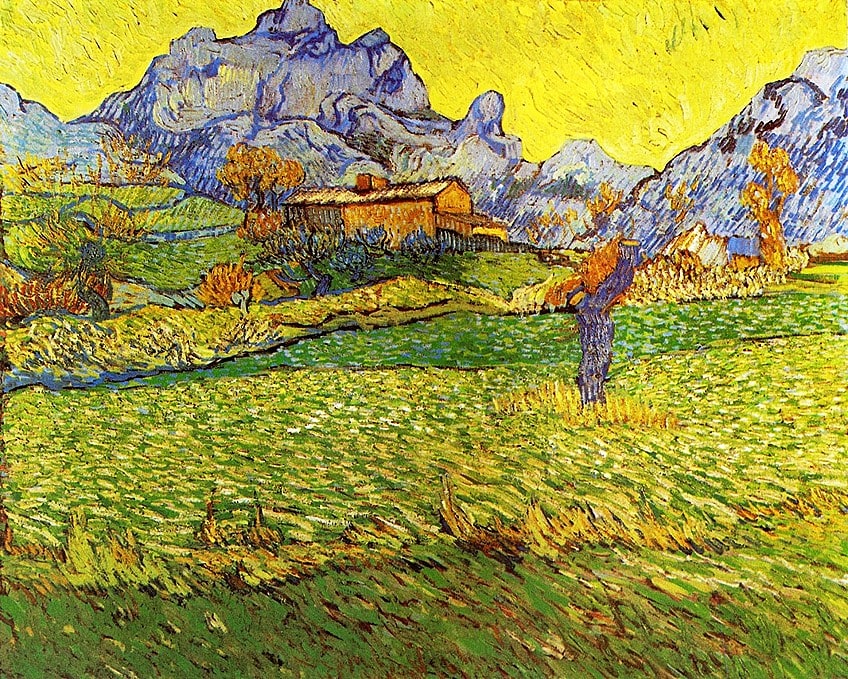
Second, art elements are important in not only their combination and use but also their educational value. Understanding the basis of artwork and production processes means understanding the value of the artwork and therefore gives you a different lens of viewing the artwork. By identifying an artist’s style through the use of different art elements, you can learn and compare different artworks to see how an artist manipulated their use of art elements to create masterpieces. Perhaps you could even try replicating a style as part of the learning process.
And finally, art elements will not only give you a greater appreciation of art but will expand your appreciation beyond the confines of art and design.
Art and design feature in everyday life and this can be useful to understand the psychology behind design and art, as well as the psychology behind everyday items, buildings, and spaces. In return for your updated knowledge of art elements and principles, you receive a broader and enhanced worldview.
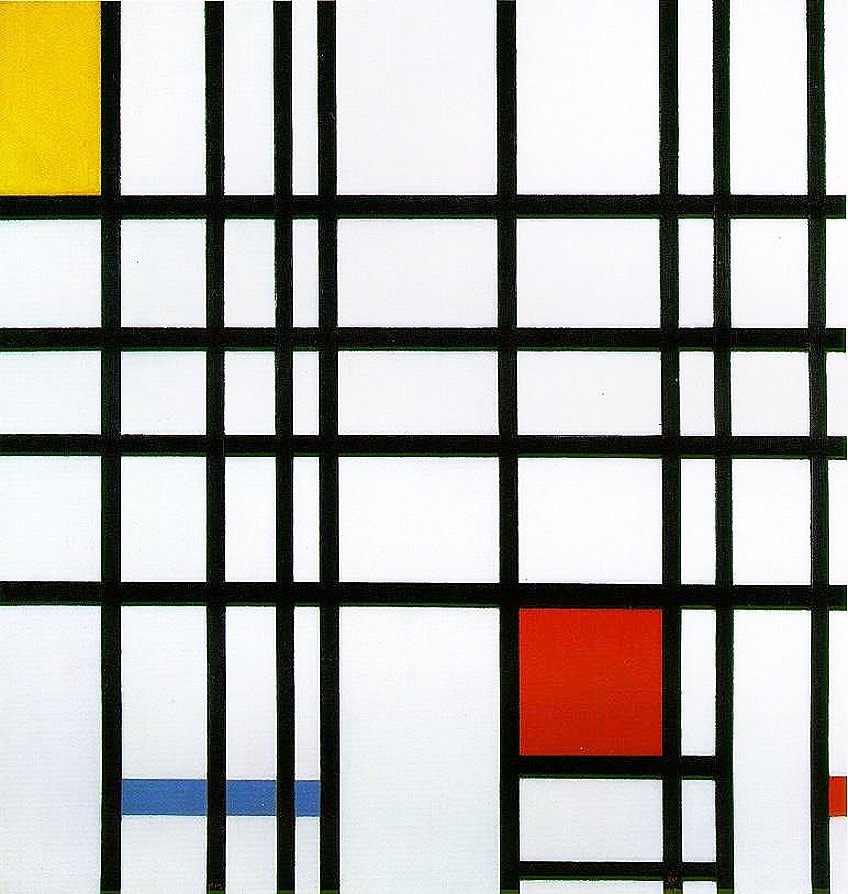
While art elements are the building blocks of design and art beyond its own genre, the principles of art grant you access to appreciation and guidance beyond simply viewing the artwork through an analytical, technical lens. Art principles can be said to encompass the “comprehension” of the artwork as opposed to the simple observation of artwork. Together, art principles and art elements are essential to your introduction to the art space and even if you have not received formal training as an artist, having a grasp of the basic art elements and principles puts you one step ahead in your art career.
Understanding the basics of art elements and art principles can prove to be incredibly useful in your artistic pursuits. We hope this introduction to the various art elements and art principles will help guide you on your journey to gaining a technical understanding of how art is made and how you can begin to view an artwork. Take some time to digest this information and stay tuned for more in-depth articles covering each art element for further study and application.
Frequently Asked Questions
What Are the Elements of Art?
The seven elements of art are line, form, shape, color, texture, value, and space.
What Are the Basic Principles of Art?
The basic principles of art are rhythm, balance, proportion, variety, gradation, emphasis, harmony, and movement.
What Is the Difference Between Art Elements and Art Principles?
The difference between art elements and art principles is that art elements are specific aspects of art-making that form the foundational aspects of an artwork. It is useful to understand them as the basic building blocks of an artwork or tools. Art principles are the method of organizing art elements and when used in conjunction with the basic building blocks, it can be manipulated and rearranged to achieve a variety of different visual effects.
Why Are the Principles of Art Called Design Principles?
The principles of art are also called the principles of design because they work quite closely together and are often interchanged between disciplines. Art cannot be constructed without certain design principles and therefore the two are considered the same. The principles of design are often restricted to several but sometimes you may find more principles when looking at design in art.
What Are the Benefits of Learning the Seven Elements of Art?
The benefits of learning the seven elements of art include gaining a deeper understanding of how an artwork can be constructed since the elements of art are considered the building blocks to making, viewing, and interpreting artworks. This can help you develop your own art style and improve your creative process.
What Are Other Examples of Art Principles?
Other examples of art principles include unity and pattern, which are considered additional art principles. Unity is often intertwined with harmony while pattern alludes to the uniform repetition of art elements.
Jordan Anthony is a Cape Town-based film photographer, curator, and arts writer. She holds a Bachelor of Art in Fine Arts from the University of the Witwatersrand, Johannesburg, where she explored themes like healing, identity, dreams, and intuitive creation in her Contemporary art practice. Jordan has collaborated with various local art institutions, including the KZNSA Gallery in Durban, the Turbine Art Fair, and the Wits Art Museum. Her photography focuses on abstract color manipulations, portraiture, candid shots, and urban landscapes. She’s intrigued by philosophy, memory, and esotericism, drawing inspiration from Surrealism, Fluxus, and ancient civilizations, as well as childhood influences and found objects. Jordan is working for artfilemagazine since 2022 and writes blog posts about art history and photography.
Learn more about Jordan Anthony and about us.
Cite this Article
Jordan, Anthony, “Elements of Art – An Analysis of the Most Important Art Elements.” artfilemagazine – Your Online Art Source. August 22, 2022. URL: https://artfilemagazine.com/elements-of-art/
Anthony, J. (2022, 22 August). Elements of Art – An Analysis of the Most Important Art Elements. artfilemagazine – Your Online Art Source. https://artfilemagazine.com/elements-of-art/
Anthony, Jordan. “Elements of Art – An Analysis of the Most Important Art Elements.” artfilemagazine – Your Online Art Source, August 22, 2022. https://artfilemagazine.com/elements-of-art/.



